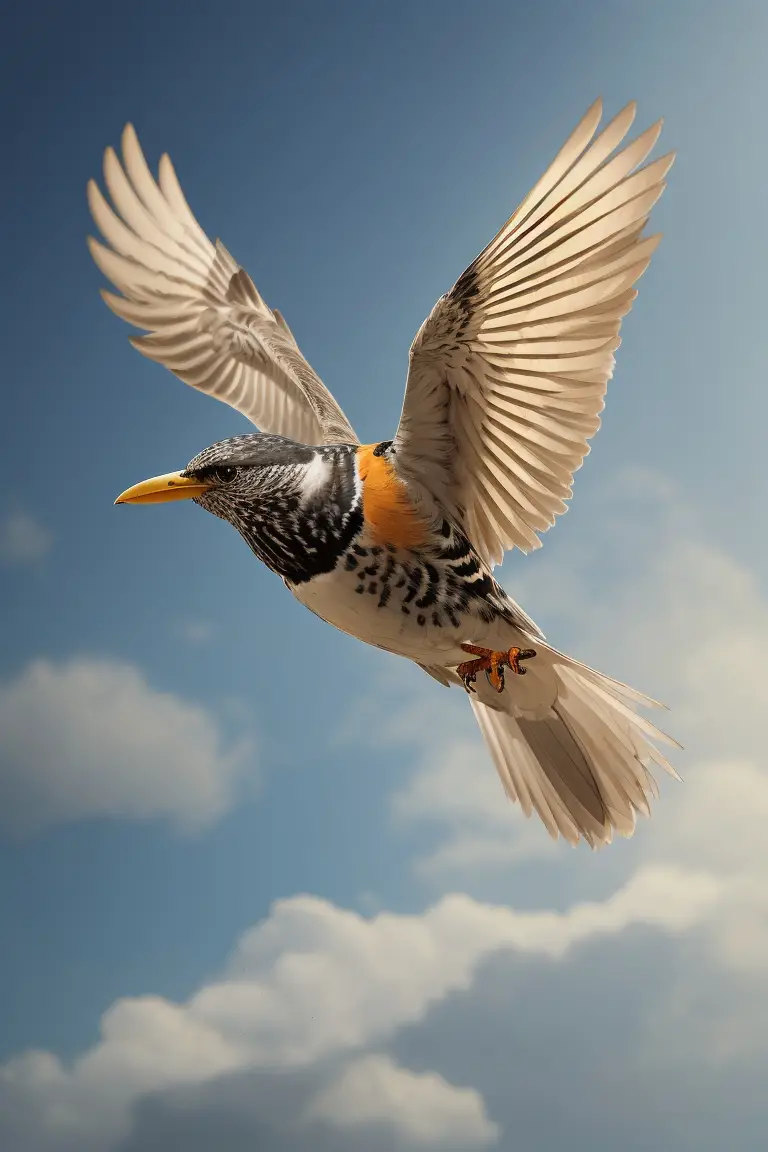
Have you ever found yourself pondering over the diet of buzzards? These majestic birds have piqued my curiosity too, with their varied palette ranging from worms to rabbits. In this article, we’re going to delve into the diverse menu that sustains a buzzard.
Join me on this fascinating exploration into what fills the belly of these magnificent creatures!
Key Takeaways
- Buzzards eat a variety of animals including small mammals like rabbits and voles, birds, reptiles, and rodents. They are skilled hunters that can also adapt their diet to include large insects and earthworms when other prey is scarce.
- Carrion is a significant part of buzzards’ diet. They use carrion as an important food source especially when live prey is hard to find. This shows their ability to adapt and survive in different conditions.
- These birds do not eat fish, vegetation, or fruits. Unlike vultures that feed on fresh carrion from recently dead animals, buzzards avoid this type of meal showing they have specific dietary preferences.
- The presence or absence of certain types of prey influences where buzzards hunt and what they eat. Their role as top predators helps control the population of pests and keeps the ecosystem balanced.
- Understanding what buzzards eat provides insight into their behavior in natural habitats and highlights the importance of protecting diverse ecosystems for these predators to thrive.
What do Buzzards Typically Eat?
Buzzards primarily feed on small mammals like rabbits, shrews, and hedgehogs. They also hunt birds, reptiles, and rodents such as voles and rats.
Small mammals (rabbits, shrews, hedgehogs)
I often watch buzzards hunt. They love to eat small mammals like rabbits, shrews, and hedgehogs. These creatures make up a big part of their diet. I see them swoop down in fields or forests to catch these animals with great skill.
Their sharp eyes spot moving prey easily, even if it’s hiding under leaves or snow. Once they catch it, they use their strong beaks to eat. For me, observing how buzzards adapt to find and capture these various mammals is fascinating.
It shows how skilled and versatile they are as predators.
Birds
Buzzards are opportunistic hunters, and birds make up a significant portion of their diet. With their keen eyesight and agile flight, buzzards are skilled at capturing smaller birds in mid-air.
They will also hunt ground-feeding birds such as pigeons, pheasants, and occasionally smaller species like sparrows or starlings. Additionally, when the opportunity arises, buzzards are known to scavenge on bird carcasses for an easy meal.
Their adaptability in pursuing avian prey demonstrates their prowess as top predators in the bird world.
Reptiles
Reptiles are also part of the buzzard’s diet. They will hunt and consume reptiles when they come across them. This can include small snakes, lizards, and even the occasional turtle or tortoise if available in their environment.
Buzzards adapt their diet based on what is accessible to them.
Their appetite for reptiles may change depending on prey availability but remains as a regular part of their varied diet. The presence of reptiles in the area can influence buzzards’ feeding habits and ultimately impact their breeding success and overall population density.
Rodents (voles, rats)
Buzzards have a varied diet, including voles and rats. They are skilled at hunting these small rodents. Their ability to adapt their diet based on prey availability ensures they thrive in various ecosystems.
The presence of voles and rats in the buzzard’s diet highlights their role as efficient predators of small mammals. These potential prey items contribute to the diversity and adaptability of the buzzard’s diet, enabling them to flourish in different habitats while maintaining a balanced ecosystem.
Other Prey Choices
Apart from small mammals and birds, buzzards also feed on earthworms and large insects. To learn more about the diverse diet of these fascinating birds, keep reading!
Earthworms
Earthworms are also part of a buzzard’s diet, especially when other prey is scarce. They are important as an alternative food source. Buzzards will consume earthworms along with their usual diet of small mammals and birds.
The availability of earthworms can impact buzzards’ diet diversity, which in turn influences breeding density and reproductive success. This makes them flexible and adaptable hunters within their ecosystem, ensuring survival even when other prey is limited.
Moving on to “Large Insects.”
Large insects
In addition to consuming earthworms, buzzards also feed on large insects as part of their varied diet. They are opportunistic hunters and will resort to eating insects when their usual prey is scarce.
Buzzards’ ability to adapt their diet based on availability enables them to thrive in diverse ecosystems, where they can efficiently hunt for large insects to sustain themselves.
Their diet diversity shows that they do not have a specific preference for certain types of prey and will adjust accordingly. These adaptable tendencies highlight the resourcefulness of buzzards in ensuring they meet their dietary needs, even if it means including large insects in their meal options.
The Role of Carrion in their Diet
Carrion plays a crucial role in the diet of buzzards. They have a remarkable ability to locate and feed on carrion, which includes dead animals and other organic matter. This scavenging behavior allows them to make use of available food resources, especially during times when live prey is scarce.
Carrion forms an important part of their diet, providing them with essential nutrients and sustenance necessary for survival.
As opportunistic feeders, buzzards are adept at recognizing and consuming carrion from various sources. They scavenge on carrion as an efficient way to supplement their diet when hunting live prey becomes challenging or limited due to factors like environmental conditions or competition from other predators.
The availability of carrion can significantly influence the overall diet diversity and feeding habits of these birds, showcasing their adaptive nature in obtaining sustenance.
Buzzards as Top Predators: What They Don’t Eat
Buzzards do not eat fish, vegetation, or fruits. They are selective in their diet and tend to avoid these food sources. Carrion is an important part of their diet, but they will not consume fresh carrion from healthy animals.
This distinguishes them from vultures that primarily feed on carrion from recently deceased animals.
Their robust digestive system allows them to feed on a wide range of prey items without being limited by potential toxins in the food they consume.
This ensures that buzzards remain effective top predators even when facing challenges in obtaining their typical prey items such as small mammals and birds.
The presence or absence of other predators can influence the availability of suitable prey for buzzards, impacting their dietary choices and hunting strategies based on the ecosystem’s conditions.
Conclusion
I love watching birds, and buzzards are some of the most fascinating ones out there. Let’s dive into what they eat. Buzzards enjoy a varied diet, munching on small mammals like rabbits, voles, and even hedgehogs.
They don’t stop there; these birds also feast on other birds, reptiles, and rodents.
Sometimes they go for earthworms and big insects when their favorite meals aren’t around. Dead animals or carrion is another food source for them. It’s quite interesting because it shows how adaptable they are.
At the top of the food chain, certain things are off their menu. Buzzards avoid eating toxic prey and tend to stay away from large mammals that are difficult to hunt.
Understanding what buzzards eat helps us appreciate how these birds fit into our ecosystem. From forests to fields, they play a crucial role in controlling pest populations and cleaning up carcasses.
Bird lovers find this knowledge especially thrilling as it adds depth to bird-watching experiences.
I’m Owen Featherstone, your bird-watching buddy and enthusiast of all things feathered! Armed with binoculars and a notebook, I’m on a never-ending quest to uncover the mysteries of our avian friends. Whether it’s deciphering melodies in a dawn chorus or finding out if hummingbirds ever take coffee breaks, I’m here to share the delightful world of birds with you. So grab your virtual wings, and let’s explore the skies together!







